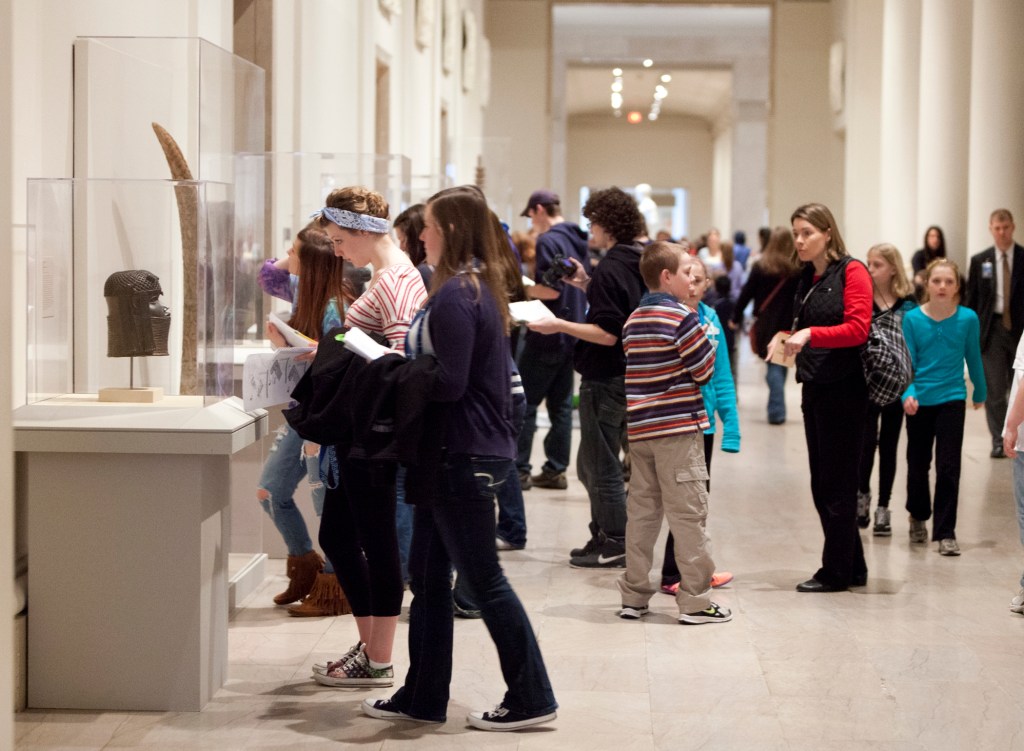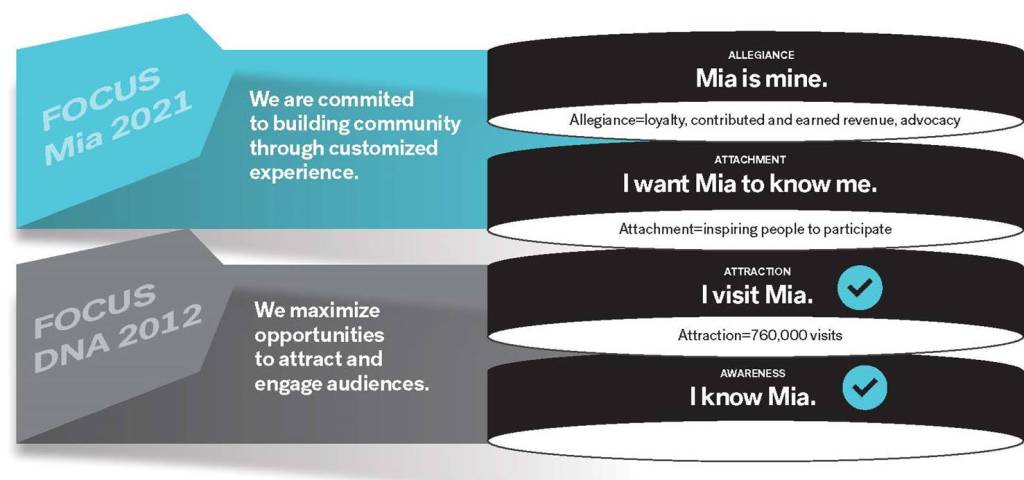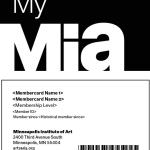
Kristin Prestegaard is the Chief Engagement Officer at the Minneapolis Institute of Art (Mia). This is the first article in a series we are presenting on how Mia has expanded its audience.

At the Minneapolis Institute of Art (Mia), we’ve worked hard to increase awareness of and attraction to the museum, and our efforts have resulted in a dramatic expansion of our audience. Annual attendance (measured by visits) has grown 70 percent since 2012, to a record-breaking peak of 850,000 in calendar year 2015, and we currently average 788,000 visitors each year.
Yet despite this positive growth, membership remained flat, leading us to ask ourselves: What can we do to further deepen relationships with this new audience and thus achieve the mission and vision for a sustainable future?
In order to achieve sustainability, Mia needed to create a new model of outreach to target—and subsequently, retain—new audiences. We had to address the quality of the experience had by each individual visitor. We had to foster a personal connection to the museum that would lead to a closer sense of attachment, an unshakeable allegiance, and increased return visits.
To do this, we began by noting the consumer marketplace. The rise of data and metrics has changed the way customers—including museum audiences—engage with businesses and institutions, and vice versa. Audiences today expect that in their interactions with the museum, Mia will demonstrate knowledge of, and ability to deliver to, their personal needs and interests.

These changes are driven by trends that include:
Show Me You Know Me: Consumers, including museum audiences, have increased expectations about how organizations will use their individual data to personalize experiences to anticipate and meet their needs. Examples of personalization can be found across a range of organizations and industries (look at Spotify’s “Your Daily Mix,” for example). In today’s world, the concept of “show me you know me” is critical to effective customer service.
Skip over related stories to continue reading articleExpanded Experiences: As noted in a recent Culture Track survey, audiences define cultural activities as diverse as park visits, street art, independent films, fine dining, and online lectures. Audiences have expanded the definition of the word “culture” to mean the context, connection, and fulfillment they have with an experience. For museums, this means that all facets of a visitor’s experience need to be engaging, consistent, and relevant.
Loyalty Programs: Organizations across the for-profit and not-for-profit landscape are succeeding with efforts to engage audiences through loyalty strategies, including rewards programs. Examples range from Caribou Coffee’s points-based frequent-buyer program to museum initiatives like the Dallas Museum of Art’s new Friends program. The competitive landscape requires Mia to keep pace with organizations that recognize and reward frequent participation and displays of loyalty.
Membership: Throughout the cultural sector, research shows declines in membership and season subscriptions. Membership in visual-arts organizations declined from 26 percent of visitors to 15 percent between 2011 and 2014. Mia’s own membership declined to 18,500 households in 2014, from a peak of more than 30,000. The concept of purchasing an annual membership is less appealing to new audiences. At the same time, aging of existing traditional audiences is eroding the long-term membership base of many cultural institutions, including Mia.
To address these challenges, Mia developed a roadmap based on the Daniel C. Funk and Jeff James study on guiding consumers from awareness to allegiance.
Awareness: I know Mia
Attraction: I visit Mia
Attachment: I want Mia to know me
Allegiance: Mia is mine

The first step was maximizing opportunities to attract and engage audiences. This included several key initiatives to encourage and enable audiences to show increased affiliation with and attachment to the museum:


- Designed a new upper and lower lobby experience to facilitate face-to-face visitor interaction with Mia staff, volunteers, and each other
- Created the My Mia program, a new membership model which starts at no cost, therefore eliminating financial barriers to participation
- In process of creating a new mobile application and a rewards program to encourage visitors to participate in new ways and track and share their museum experiences
- In process of implementing a new customer relationship management (CRM) software platform to support data-driven management of Mia’s visitors
With these tactics in place, Mia has moved into the next phase of our roadmap and is focusing on building community through customized experience. We are investing resources and talent to foster greater audience allegiance. Initially, this will involve gathering and analyzing meaningful data about the individuals who make up our many audiences. The goal is to use this data to design personalized communications and experiences on a consistent basis, engendering a cycle of ongoing engagement, greater activity, sharing of information, and philanthropy.
Next month’s article will discuss this data in more detail and explore the My Mia program and the way it has helped us understand our audience on a deeper level.
About the Author
Kristin Prestegaard oversees the Audience Engagement division, including marketing, public relations, design and editorial, and custom visits. She plays a lead role in strategizing audience engagement initiatives and has worked in the marketing field for over 15 years.







Comments